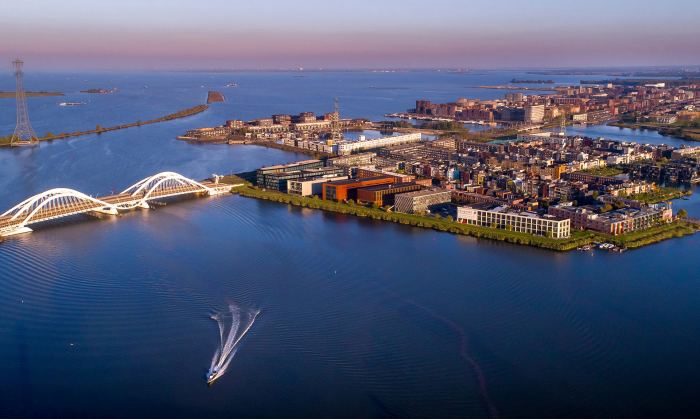The whole of the Netherlands rallied around one man and his ultimate challenge in late August: TV and radio, newspapers and the social media turned the spotlight on Olympic swimming champion Maarten van der Weijden. To raise money for cancer research, he had set himself the extreme goal of swimming the Elfstedentocht route – a 200-kilometer-long speed skating race considered by many to be the ultimate Dutch sports event. His heroic efforts raised a record amount of over 5 million euros.
When and how did you come up with the idea to swim the route of the Elfstedentocht?
“In 2015, I met Dennis, a man my age with leukemia who, like me, had a baby daughter. He was a fellow cancer victim and we had a strong connection. Our histories were quite similar but there was one big difference: after a long period of illness I was declared cancer-free in 2005 but Dennis knew that he wouldn’t be so fortunate. The difference in our fates touched me deeply: it was incredibly unfair and it was painful to feel how lucky I was, and how unlucky Dennis had been. And then there was the media coverage: journalists would often say that I had beaten cancer as if it was down to me. But that’s not right at all. The treatment just happened to work for me but not for Dennis. My feelings about that were what I call ‘survivor’s guilt’. It’s an expression I heard a mountain climber use when he survived an avalanche that killed his climbing partner. My survivor’s guilt made me want to do something for Dennis and everyone else in a similar situation. I wanted to raise money for cancer research and I realized that I would have to do something extreme to really make the fundraising a success. So I trained for my longest swim ever, the classic marathon over a distance of 42 kilometers. That was a real challenge because I hadn’t swum seriously in the eight years since winning my Olympic gold in Beijing. Once I started training, I became convinced that I had to do more. The most extreme challenge I could come up with was to swim the 200-kilometer Elfstedentocht route with the fewest possible breaks. After all, in the Netherlands there is only one Ultimate Race.”
Inspiration
To what extent did the achievements of other athletes inspire you?
“Shortly before the event I read an article about Diana Nyad who swam from Cuba to Florida at the age of 64. That was very inspiring. Athletes who have achieved incredible things, like Terry Fox, the Canadian athlete and campaigner for cancer research, are always inspirational. Terry became famous for his Marathon of Hope, which saw him run across Canada to raise funds for cancer research in 1980. One of his legs had been amputated and he ran using an artificial leg. Initially his Marathon of Hope generated little attention and the amounts raised were small but the media soon got interested and the donations poured in. That was the effect I was hoping for and the result exceeded my expectations.”
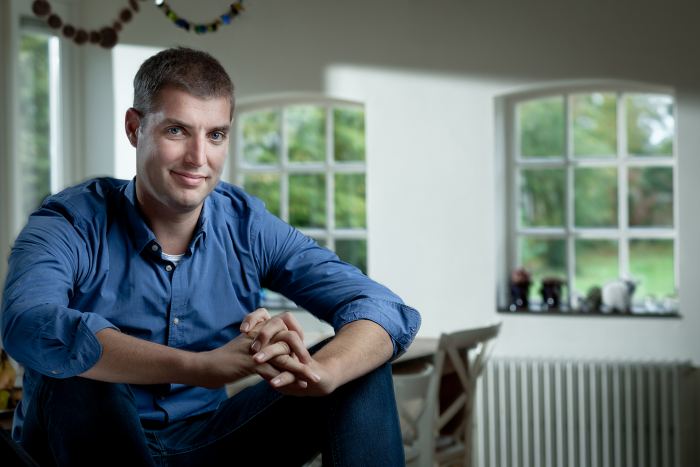
Olympic swimming champion Maarten van der Weijden
Setting intermediate goals
How do you prepare physically to swim such a huge distance?
“I thought 200 kilometers might just be possible. My thinking was that my training had to fit into my day-to-day life; I wanted to be sure I had enough time left over to spend with my family. In the run-up to the Elfstedentocht I kept swimming longer and longer distances. One of the things I did was swim around the island of Texel: that took around 11 hours. I also did a 24-hour swim, breaking the world record with a distance of 102.8 kilometers, and a 36-hour swim. In addition, I swam 50 kilometers in the pool in around 12 hours. Another time, I swam for 24 hours on end. As part of my final preparations, I swam the 140 kilometers from Amsterdam to Leeuwarden. By setting yourself intermediate goals, you can keep going a bit further.”
Goal on the horizon
What did it take for your groundbreaking idea to actually take shape?
“The first thing you do is set a goal and it’s only then you start to think about how you’re going to get there. I really believed in my idea. I thought I could do it but I also realized it would be difficult to get other people to believe in my bold plan. Lots of good ideas don’t come to fruition because they are so out there that nobody dares to get involved. This plan was new, not just because of the sporting achievement but also because of the whole organization it involved. It was important to manage the sponsoring and marketing while making the event into an adventure. The idea was that I would do everything I could and pull out all the stops – and see how far I could get. So my focus wasn’t just on the actual swimming; I worked hard on getting commitment from the sponsors. That was vital because there were so many uncertain factors. If the summer had been cold, with water temperatures of 16 degrees or lower, I would have been forced to stop after a couple of hours. Luckily I had a team of good coaches around me and together with the people from my foundation we were able to put the idea on the map. What really helped was that the Dutch national TV pitched in early. They agreed to make two shows, even though it was still unclear whether people would be interested. The first signs of public interest came during my training swim from Amsterdam to Leeuwarden. Even then, the people of Friesland were so enthusiastic that they even came to cheer me on in the middle of the night.”
By setting yourself intermediate goals, you can keep going a bit further.
Sleep and cold
Were there any innovations to make your attempt easier?
“Extreme sporting achievements like this are definitely not healthy but with experts can help you to tackle things as safely as possible and maximize your chances of success. I was most worried about sleeping and about the cold. One of the experts in my team is a doctor specialized in technical solutions to combat fatigue. That resulted in the lighted goggles I wore at night. The light disrupts your biorhythm and reduces the need for sleep. And we used a chip that I swallowed to monitor my body temperature constantly. We also looked at ways of warming up the swimsuit electronically but that didn’t turn out to be useful. During the swim, I ended up wearing gloves, slippers and two wetsuits, one of which was lined with neoprene, which is a good insulating, synthetic, rubber that also improves buoyancy.”
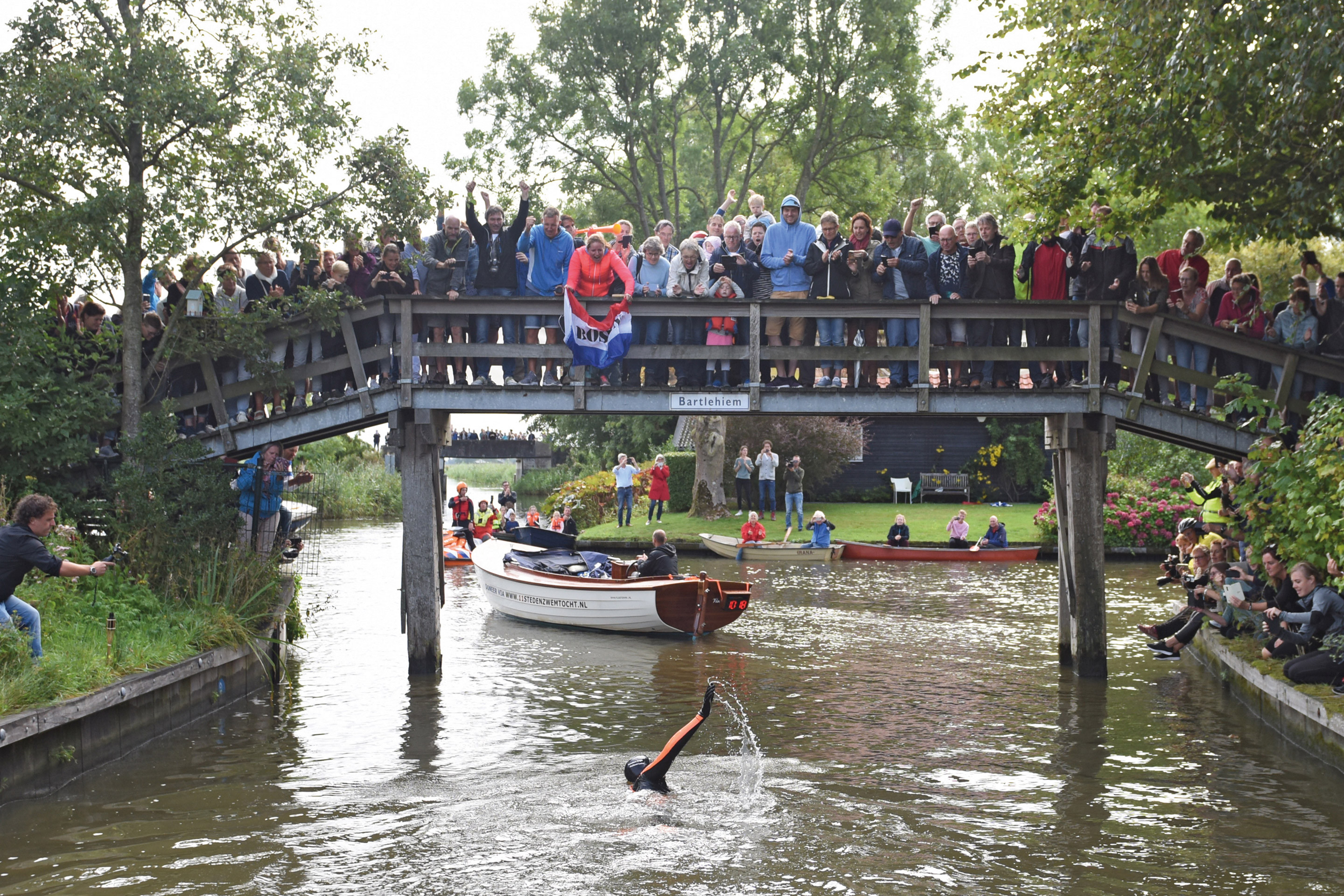
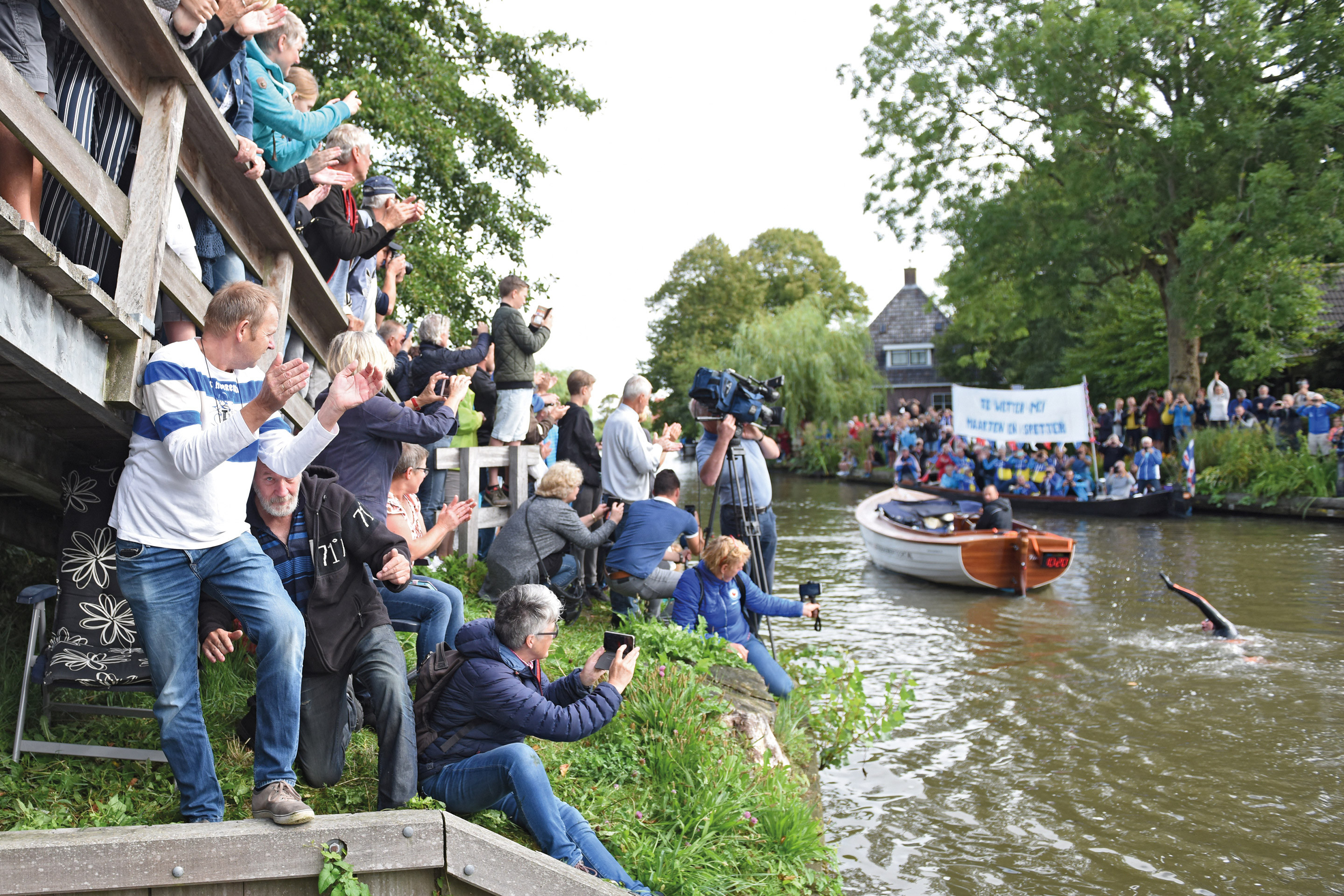
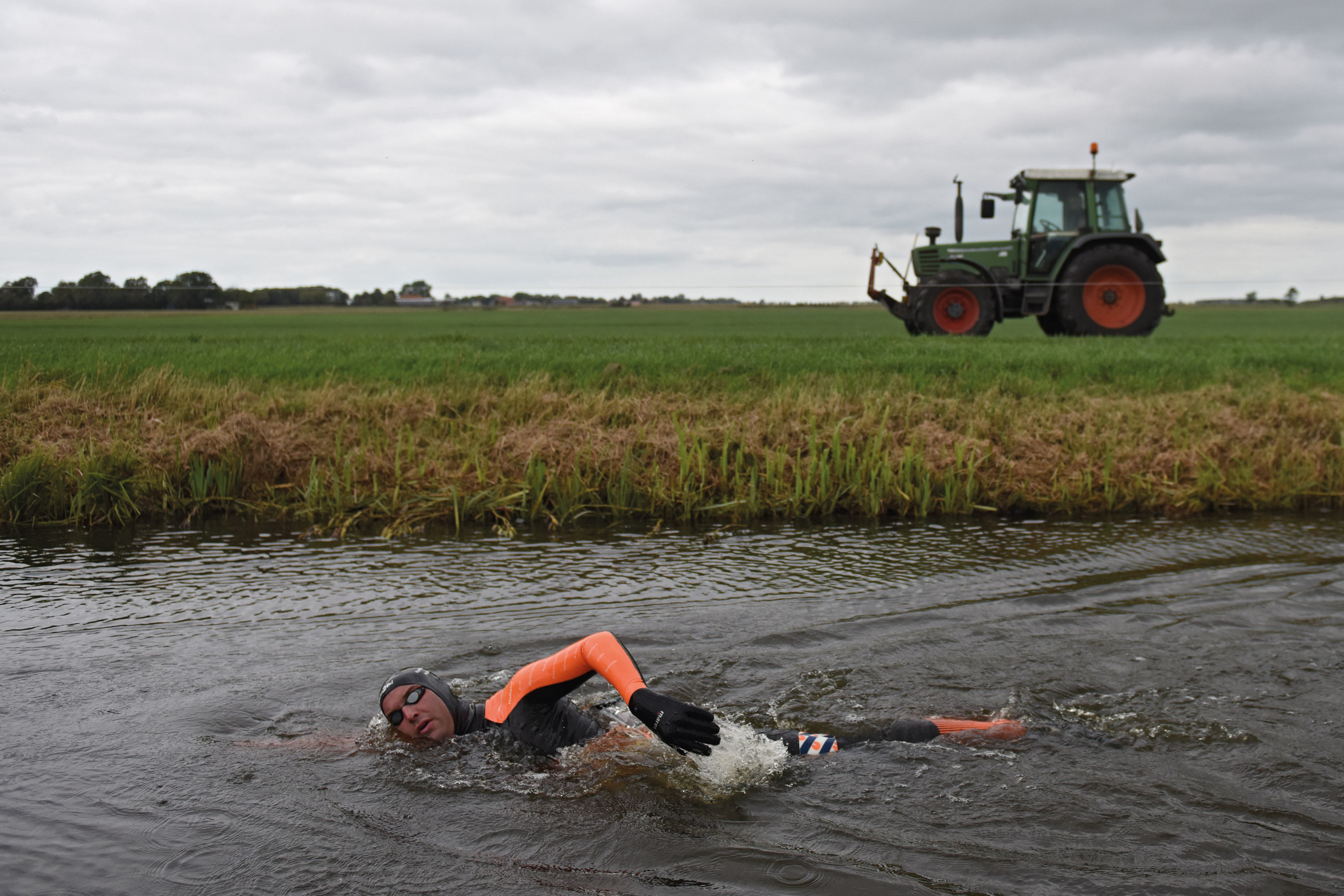
Live streams
People were lined up along the route day and night to cheer you on. How do you explain the enormous interest in your swim?
“I think the charity side – the fact that you are making such an effort for others without directly benefiting from it yourself – plays a large role. And then there’s the fact that the Elfstedentocht is such a magical event for many Dutch people. Another important element was the decision by Dutch TV to broadcast the live streams online, just like during the Olympics and important football matches. I heard that the numbers watching my live streams were the highest ever in the Netherlands – with even more people watching than during any large international sporting event ever. Obviously, that’s fantastic.”
Mutual connection
Were you moved by the all the people along the route cheering you on?
“Definitely! All the interest was an enormous boost. You have to be strong as an individual to do something as tough as this. But the crowds gave me so much positive energy. I was lifted by all the people along the route; it wasn’t just about me but about us. So this swim was the opposite of my other sporting achievements. The preparations for major championships and the Olympics were always only about me. I would isolate myself from everything in a pretty radical way by living and sleeping in a special oxygen tent for around 15 hours a day in the 18 months before the Beijing Olympics. During the Elfstedentocht I realized more than ever that the value of sport is not just about winning gold medals but about being connected with others. As an elite athlete you don’t always see it but the connections between people are what make sport relevant to society.”
ALL THE INTEREST WAS AN ENORMOUS BOOST. YOU HAVE TO BE STRONG AS AN INDIVIDUAL TO DO SOMETHING AS TOUGH AS THIS. BUT THE CROWDS GAVE ME SO MUCH POSITIVE ENERGY.
The further the better
On Sunday morning you were almost ready to quit but you carried on swimming until Monday afternoon. Can you explain why?
“I had reached the point where I knew I could still take the pain but not the prospect of swimming on for such a long time. I had only swum for 20 hours and had another 40 or so hours to go. That thought was just too much. I spoke to my wife Daisy about it and she said: ‘You don’t have to make it to the finish line; just keep swimming until you can’t any longer!’ That was a revelation to me. The whole time I had been thinking that all those people were lining the route because of my promise to swim the Elfstedentocht. But Daisy said: ‘Those people don’t care about you making it to the finish. They’re there because you’re willing to try and every minute you’re in the water is another 1,000 euros for cancer research. The further you get, the better for all those cancer patients.’ It was only then that I could accept that it wouldn’t be the end of the world if I didn’t make it to Leeuwarden, and that’s what gave me the strength to swim on.”
Giving my all
You eventually swam 163 kilometers in 55 hours. How do you look back at your achievement? Were you disappointed that you didn’t achieve the ultimate goal?
“Oddly enough, no. I wanted to give my all and that’s what I did. I pushed on until my doctor told me I really had to stop. That’s all you can do. I’m really pleased about how it went. And I’m extremely happy about raising more than five million euros for cancer research. That money is desperately needed because 40,000 people still die from cancer in the Netherlands every year. Our foundation sees to it that every last cent is spent on research. The Dutch Cancer Society (KWF) and patient groups choose the studies and the proceeds from the event have now made twelve research projects possible.”
New horizons?
Your swimming achievement is a great example of creating new horizons. Do you see any other new horizons for yourself in the future?
“I will continue to do my best to help as many cancer patients as possible. But I don’t expect to take on any sports challenges more extreme than this swim. There are other ways to raise money. Who knows, this event could be followed up in another way, like Terry Fox’s Marathon of Hope, which led to fundraising events across Canada that are still taking place every year. I’ve only swum three times since August and that’s fine by me for now. To be honest, I’m not even that fond of competitive swimming. I started when I was a kid because I wanted to swim faster than my big sister.”
